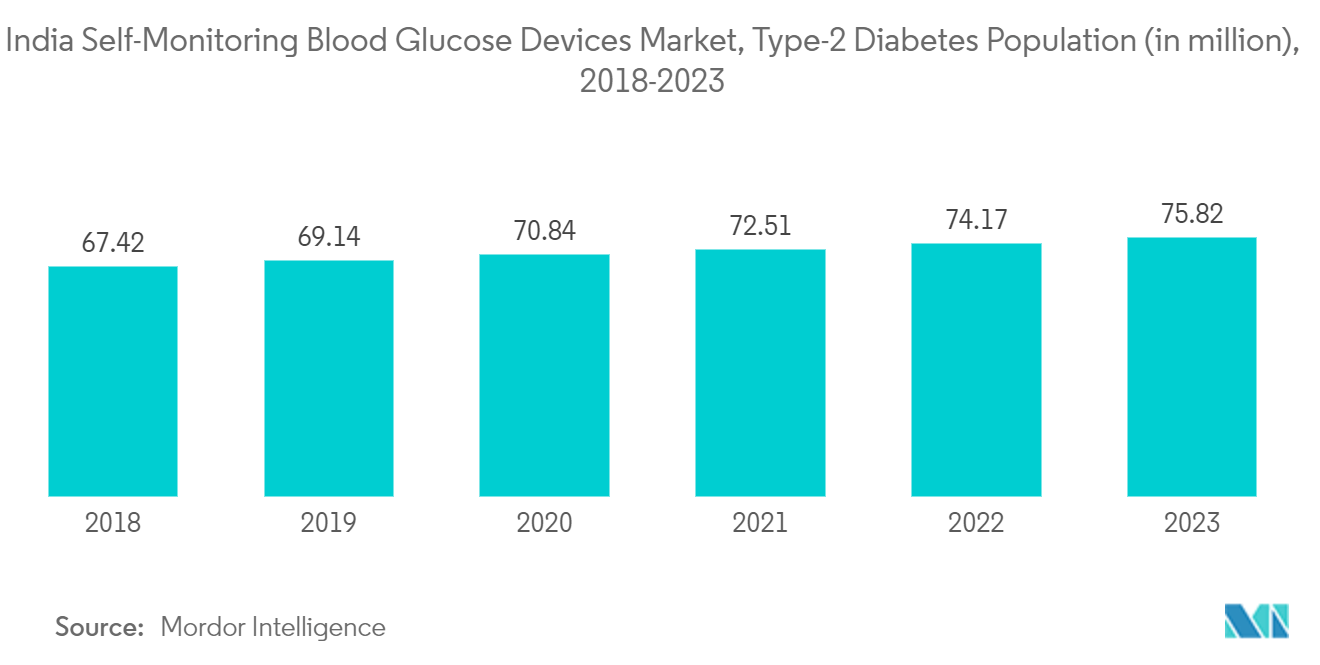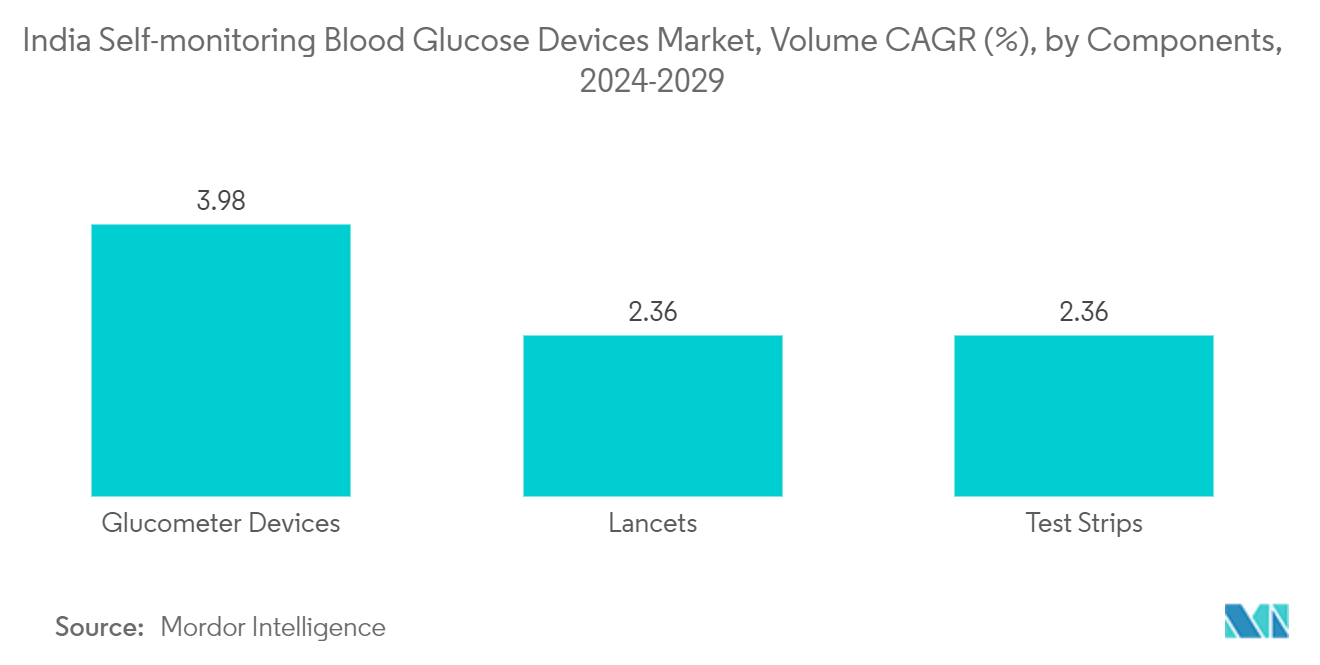Market Trends of India Self-Monitoring Blood Glucose Devices Industry
Rising Diabetes Prevalence in India
The diabetes population in India is expected to grow by about 1.9% over the forecast period.
According to IDF estimates, the number of people with diabetes in India was the second highest in the world, after China. One in 12 adults, or more than 74 million people living in India, are diabetes patients. A further 40 million adults in India have impaired glucose tolerance, which places them at high risk of developing type-2 diabetes. More than half of people living with diabetes in India are undiagnosed.
Nearly 10% of India's population is likely to be affected by diabetes over the forecast period. Obesity, especially central obesity, increased visceral fat due to physical inactivity, and consumption of high-calorie, high-fat, and high-sugar diets are the major contributing factors to diabetes in Indians. The most prominent work culture perpetuated in the country, which includes sitting for hours in one position and eating fast food with little or no physical activity, is a significant contributor to diabetes in the working-age group, causing this rapid increase in diabetes cases in India.
Various pieces of evidence suggest that diabetes can be successfully managed, especially when detected early. Multifactorial intervention, including control of blood glucose, blood pressure, and lipids, can reduce the broad range of diabetes-related microvascular and macrovascular complications and premature mortality.
Therefore, the studied market is anticipated to witness growth over the analysis period due to rising prevalence and the aforementioned factors.

The Glucometer Devices Segment is expected to witness the highest CAGR over the forecast period
The glucometers segment is expected to register the highest CAGR of about 4.4% in the market over the forecast period owing to the increasing adoption of glucometers in home care settings, the growing preference for home-based self-monitoring, and recent product launches of advanced glucometers.
Glucose monitoring gives people living with diabetes a complete picture of their blood sugar levels, which can influence short- and long-term treatment decisions and improve health outcomes. It allows them and their healthcare providers to assess their glycemic status and adverse effects and to determine the effectiveness of glucose-lowering therapies. Glucose monitoring has the potential to improve blood sugar management and quality of life for people living with diabetes, resulting in physical, social, emotional, and functional benefits.
Capillary blood glucose monitoring, or self-monitoring of blood glucose, is one way for people living with diabetes to measure and assess their glucose levels. It uses a drop of blood from a finger prick to get a blood glucose reading using a blood glucose meter or glucometer. Those with diabetes are advised to work with their care team to determine the frequency and pattern of testing.
According to the Ministry of Health and Family Welfare of the Government of India, out of all deaths in India, 60% were related to non-communicable diseases like diabetes, cardiovascular diseases, cancer, chronic respiratory diseases, etc. To prevent and control major NCDs, the National Program for Prevention and Control of Cancer, Diabetes, Cardiovascular Diseases, and Stroke (NPCDCS) has been launched. This program includes medical education, health awareness in schools, and urban planning for diabetes.
Thus, the above-mentioned factors are expected to drive segment growth over the forecast period.


